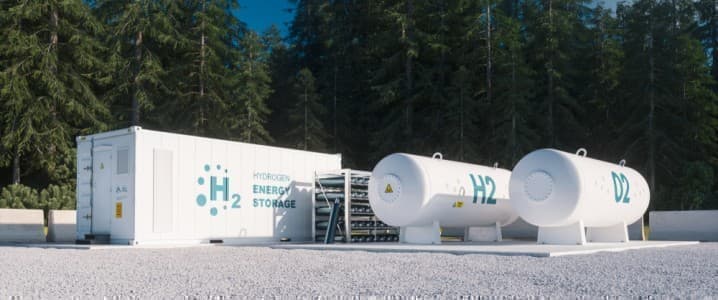Tohoku University researchers drilling into the magnesium hydride hydrogen storage concept are zeroing into the problems. Magnesium hydride has long been touted for its potential to store large amounts of hydrogen, something essential if hydrogen is to play a role in powering a sustainable future. Yet, sluggish dehydrogenation kinetics and the high temperature required to decompose and produce hydrogen from the material have stymied its use. Now, researchers have identified why this is so, paving the way for future design guidelines and widespread magnesium hydride commercial use.
Details of their findings were published in the Journal of Materials Chemistry A, where the article was featured as a Front Cover Article.
Hydrogen could play a significant role in powering our future. It’s abundant and produces no harmful emissions when burned. But the storage and transportation of hydrogen is both costly and risky.
Currently, hydrogen is stored by three methods: high-pressure gaseous hydrogen storage, low-temperature liquid hydrogen storage, and solid-state hydrogen storage. Among solid-state hydrogen storage, solid-state materials are generally the safest and provide the most hydrogen storage density.
Metal hydrides have long been explored for their large hydrogen storage potentiality and their low cost. As these metals come into contact with gaseous hydrogen, hydrogen gets absorbed onto the surface. Further energy input leads to hydrogen atoms finding their way into the metal’s crystal lattices until the metal becomes saturated with hydrogen. From there, the material can absorb and desorb hydrogen in larger amounts.
Magnesium hydride (MgH2) has shown immense promise for superior hydrogen storage capacity. However, a high temperature is necessary for MgH2 to decompose and produce hydrogen. Furthermore, the material’s complex hydrogen migration and desorption result in sluggish dehydrogenation kinetics, have stymied its commercial application.
For decades, scientists have debated why dehydrogenation within MgH2 is so difficult. But now, the research group has uncovered an answer.
Using calculations based on spin-polarized density functional theory with van der Waals corrections, they unearthed a ‘burst effect’ during MgH2’s dehydrogenation. The initial dehydrogenation barriers measured at 2.52 and 2.53 eV (electron volt), whereas subsequent reaction barriers were 0.12-1.51 eV.
The group carried out further bond analysis with the crystal orbital Hamilton population method, where they confirmed the magnesium-hydride bond strength decreased as thedehydrogenation process continued.
Hao Li, associate professor at Tohoku University’s Advanced Institute for Materials Research (WPI-AIMR) and corresponding author of the paper pointed out, “Hydrogen migration and hydrogen desorption is much easier following the initial burst effect. Structural engineering tweaks that promote this desorption process could be the key to facilitating the hydrogen desorption of MgH2.”
Li and his colleagues demonstrated that hydrogen vacancies maintained a high degree of electronic localization when the first layer of atomic hydrogen exists. Analyses of the kinetic characteristics of MgH2 after surface dehydrogenation, performed by ab initio molecular dynamics simulations, also provided additional evidence.
Li added, “Our findings provide a theoretical basis for the MgH2’s dehydrogenation kinetics, providing important guidelines for modifying MgH2-based hydrogen storage materials.”
***
This has to put a smile on the faces of hydrogen promoters! Should the magnesium hydride solution prove workable someday, clean hydrogen in H2 form might get some market legs.
Of worthy note is that so far magnesium hydride looks like the most promising storage solution. Compared to high pressure gas storage, which is positively frightening, it looks much much safer. Compared to liquefying, the energy used getting it cooled and rewarmed plus the hardware to get it done lay a huge hit on the practicality and economics.
The fly spoiling the ointment is where a supply of magnesium might come from to satisfy world demand. Magnesium is a metal that would be mined and that seems to be a major political problem in the free and wealthy world. Plus as free metal burns with a brilliant-white light at over 5,000° F.
On the other hand there is a lot of magnesium on planet earth.
By Brian Westenhaus via New Energy and Fuel
More Top Reads From Oilprice.com:
- UN Atomic Watchdog: Iran On The Cusp of Having Nuclear Weapons
- Controversial Cost-Cutting Measures To Blame For Ohio Derailment Disaster
- Philippines Looks To Replicate Indonesia’s Nickel Market Success


















